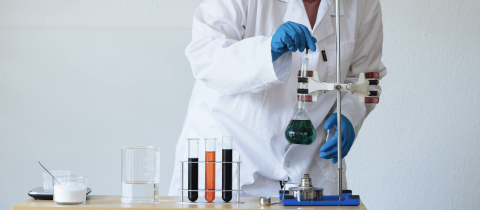I don’t think I would want to work in a rubber processing plant. Too many nitrosamines in the air, and it’s better not to inhale them. Nitrosamines after all are known carcinogens, first identified as such in 1956 when dimethylnitrosamine was proposed as a novel solvent for the dry cleaning industry. Routine screening revealed that this compound caused liver cancer in rats so of course its use as a solvent was abandoned. Later investigations found that not only dimethylnitrosamine, but about 90% of all compounds that belonged to the nitrosamine family were carcinogenic. The public first heard about this issue in the 1970s when farm animals in Norway became ill after being fed herring meal that had been treated with sodium nitrite to prevent the growth of botulinum clostridium, the organism that causes botulism. Unknown at the time was the potential of nitrites to react with naturally occurring amines in food to produce nitrosamines. It was actually dimethylnitrosamine, the same compound involved in the dry cleaning story, that turned out to be the culprit. This immediately raised a serious question. Since amines are common naturally occurring chemicals and are widespread in the food supply, could nitrosamines possibly form in human foods such as bacon, ham and hot dogs, traditionally preserved with nitrites? The answer was that they could. Bacon turned out to be a particular problem because the high frying temperatures were particularly conducive to nitrosamine formation. Measures were taken to limit the amount of nitrite added to the minimum needed to prevent botulism, but that still did not eliminate nitrosamine formation.
The search was on to find a way to still use nitrites but prevent nitrosamine formation. The answer to the dilemna came out of a chance observation made by researchers studying a new pain killing drug, aminopyrine, back in the 1960s. They had been concerned that the compound being an amine may give rise to nitrosamines, which it indeed did. Except for one specific batch. It turned out that this batch had been formulated with vitamin C as a preservative. Somehow, vitamin C stopped nitrosamine formation! This observation came to the attention of food producers who had become concerned about nitrosamines and they decided to give vitamin C a try. It worked! Today foods preserved with nitrites always have vitamin C, or a closely related compound erythorbic acid, added to prevent nitrosamine formation. But the situation is different in the rubber industry. Various amines are added to latex to serve as accelerators in the vulcanization process in which rubber is combined with sulphur to make it tough and resilient. Unfortunately these amines can react with other compounds used in rubber manufacture to produce nitrosamines which can contaminate the rubber as well as the air in teh facility. No surprise therefore that rubber industry workers have historically experienced higher rates of cancer. Since the problem came to light processing and ventillation methods have been altered to minimize exposure to nitrosamines. But total elimination is not possible. So our rubber products, whether tires, balloons or condoms do contain small amounts of carcinogenic nitrosamines. That’s only a problem, though, if you eat them. And as far as cured meats go, the salt and fat are probably a bigger concern than the traces of nitrosamines.







